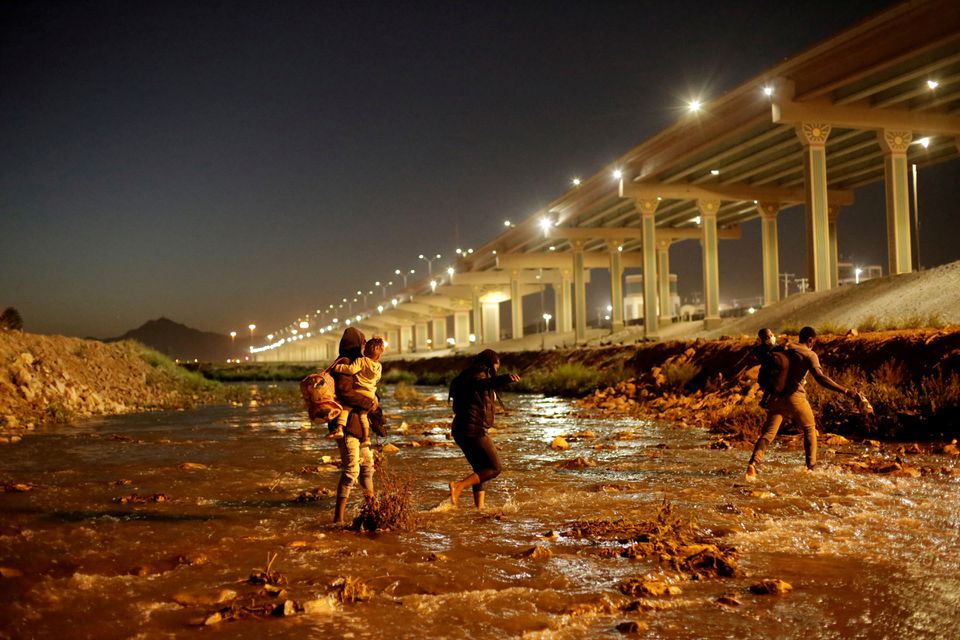Amidst a Surge of Migrants at the Border, the Immigration Debate is Reignited

In February alone, more than one hundred thousand migrants attempted to enter the United States at the U.S-Mexico border. This was more than triple the number of attempted entries in February of the previous year, and an increase of more than 25,000 people compared to January 2021. The situation does not appear to be abating; in March, numbers have reached almost 5,000 migrants a day.
Most adults apprehended while trying to enter the U.S have been turned away almost immediately under an emergency public health order instituted at the start of the pandemic. Unaccompanied children, however, were exempted from this policy by the Biden Administration under the premise that sending children back to dangerous countries alone was morally and legally unacceptable.
As a result, temporary shelters, de-densified due to the pandemic, do not have the beds necessary to house many of these young migrants. At the same time, authorities in charge of processing these children are overwhelmed. Though the law says that unaccompanied minors cannot be detained for more than 72 hours, nearly 1,000 children have now been in detention for more than 10 days.
Democrats in particular have been hesitant to call what is happening a “crisis.” But alarm bells are ringing on all sides of the political spectrum, as those on the left criticize the extended detention and lack of adequate facilities for child migrants, and those on the right decry a surge in immigration.
1. What is causing the number of immigrants to skyrocket? And what should be done?
The causes of this surge in migration are complex, but can generally be attributed to a combination of three factors:
- Worsening conditions in Central America: In Central America’s “Northern Triangle” of Guatemala, Honduras, and El Salvador, violent crime, corruption, and economic insecurity are endemic issues driving migration North. Many migrant families report being threatened with kidnapping, rape, and murder if they do not comply with local gangs. These concerns have worsened in the past year due to back-to-back natural disasters, combined with the effects of the Coronavirus pandemic.
- Pent-up demand from Trump’s “Remain in Mexico” policy: Under President Trump, asylum seekers not from Mexico were forced to wait in Mexico until their asylum claims could be processed. When President Biden repealed the Trump-era law on the basis that it needlessly endangered migrants and violated their right to asylum, the U.S was immediately faced with a backlog of thousands of people who had been waiting for their chance to enter the country. This backlog is likely partly to blame for the sudden surge in new attempted crossings.
- Hope for more lenient immigration laws under the Biden administration: Many migrants who held off under Trump are now making the journey north, believing they will have better luck under Biden. Some of this hope is manufactured by criminal traffickers, who have peddled lies about open borders to drum up new business. Yet some of this hope is also based on signals from the Biden Administration, including ending many of Trump’s anti-immigration policies, and introducing a new immigration bill offering many undocumented immigrants a path to legal status.
2. What can we do?
There are several steps that should be taken to slow the flow of migrants and to ensure the speedy and fair processing of asylum claims.
In the short term, opening more border facilities and hiring more staff will allow children to be placed in foster homes or reunited as quickly as possible with family members in the United States while their asylum claims are being processed. Meanwhile, clear communication about who is and is not eligible for asylum will prevent migrants from needlessly risking their lives in the dangerous trek north.
In the long term, solving the current crisis and preventing future surges will require fixing an overburdened immigration system and addressing the root causes of migration in migrants’ countries of origin. The average processing time for asylum claims filed in 2021 is expected to be almost four years. Hiring more immigration judges and court staff will allow for a more efficient and humane legal system. At the same time, planned investments in El Salvador, Guatemala, and Honduras will help address the corruption and violent crime that causes so many to flee.
Notably, all of these solutions will take time. Patience, compassion, and respect for the rule of law are key to solving the current situation, and to forging a path ahead for a sensible and humane immigration policy.



